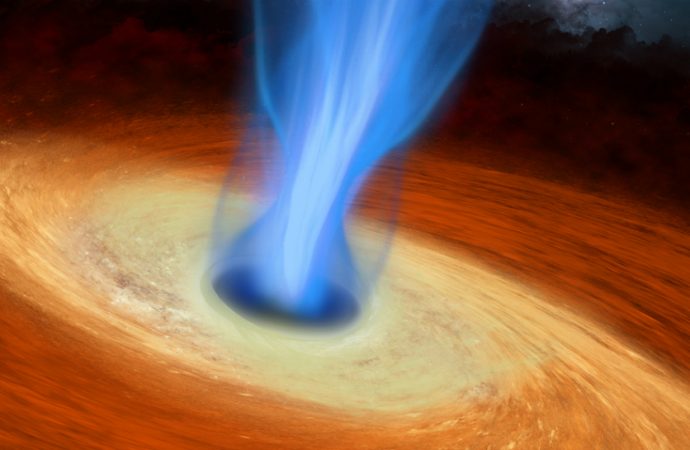We may soon be able to get our first look at a real image of a black hole courtesy of a new algorithm created by MIT researchers.
As previously reported by the Boston Globe, this new algorithm is called Continuous High-resolution Image Reconstruction using Patch priors (CHIRP), a method in which multiple telescopes across the globe take data and stitch them together to form one image.
MIT states that taking a real image of the nearest black hole will require a massive telescope as big as the Earth itself, which is obviously impossible to do. Katie Bouman, an MIT graduate student in electrical engineering and computer science who developed the algorithm, compares the imaging of a black hole to taking an “image of a grape fruit on the moon.”
“[The closest black hole is] so small that it would be equivalent to taking an image of a grapefruit on the moon,” said Bouman. “To image something with that small of detail, you would need a telescope about the size of the Earth.”
For a more accurate comparison, the Earth has a diameter of around 13,000 kilometers, whereas the diameter of the telescope we’ll need to take the image of a black hole would need to be around 10,000 kilometers.
Of course, building a telescope that size is not a viable option. But what if we use multiple telescopes installed from “widely divergent locations” around the world, take all the radio signals, and run them through an algorithm that can create a mosaic of what constitutes a black hole image? MIT said that six observatories from around the world have already agreed to participate in the undertaking.
By combining all data gathered by the Event Horizon Telescope array, researchers and scientists can fill in the holes and “paint a picture” based on what we already know of black holes.
CHIRP also has the capability to filter out unnecessary information, which helps contribute to a more accurate image of a black hole.
After all the data has been gathered, scientists aim to continue updating the algorithm so they can take into account how black holes change over time, in addition to studying magnetic fields and many others.
“Ultimately we might be able to make movies of materials being eaten by a black hole,” Michael Johnson, who also worked on the paper, told Popular Science.
“We’ve never actually seen what a black hole looks like,” she said. “And even though we have predictions, and people generate videos like in [the movie] Interstellar, it’s great to actually be able to probe it… and be able to construct those images.”
Using CHIRP can help scientists study the environment around black holes and prove Einstein’s theory of relativity, according to Bouman. If the method proves that the black hole’s size is similar to the one predicted by Einstein, it will present “great evidence” that the theory is accurate even in “extreme cases.”
Bouman is scheduled to present the CHIRP algorithm at a conference this month, MIT said. She worked on the research with the help of advisers and colleagues at MIT and Harvard.
Observations are set to be made next spring, the season that provides the most favorable conditions for detecting radio signals.
Bouman has reportedly released the test data and tools online, providing programmers the opportunity to set up their own algorithm and simulate the Event Horizon Telescope data. Bouman, who has a background in computing, states that non-physicist can contribute extensively in taking a real image of a black hole.
“In the end I’d like to excite people in the computational imaging and computer vision communities to work on this problem, too,” she said.
Source: Inquisitor

































Leave a Comment
You must be logged in to post a comment.